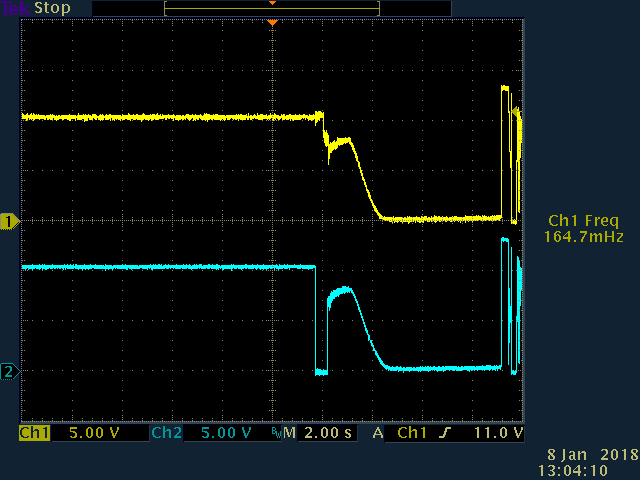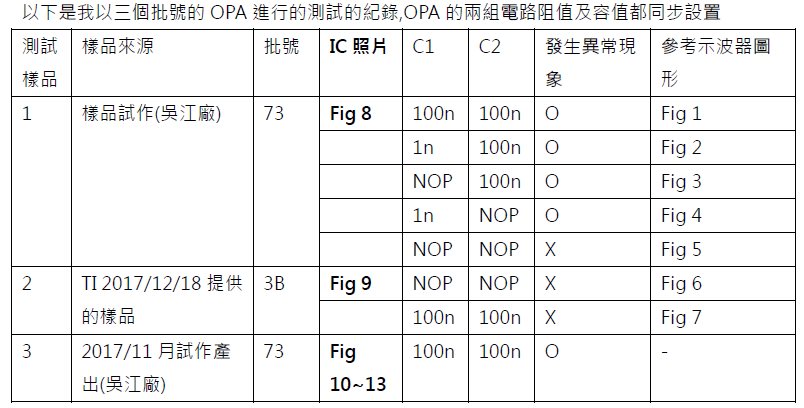Hi,
Our customer found that all the channel 2 of LM258 IC they got can't operate normally in the short current test.
But the sample I requested from BU can pass the short current test.
Below is the top view symbol (which will fail in short current test)
Below is the top view symbol (which won't failed in the short current test)
Here's the test condition
IC which failed in short current test:
When the feedback cap C1=0 and output cap C2=100n
All the IC will operate normally like the figure below in the test.
But when we adjust the the capacitance of C1 from 0 to 100n.
we can found that when we short the channel 2 to ground
The LM258 finally damaged and the figure looked like the figure below.
Could someone please explain that why this waveform in our test?
Thank you
Best Regards,
Willy Chen




